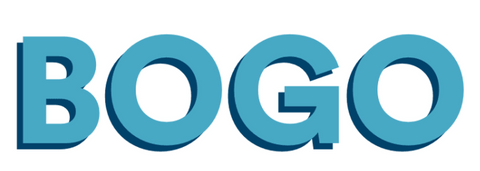How It Works

Then, I CAN READ MUSIC follows to start reading notes.
All of our books are PIANO BY NUMBER books, except I CAN READ MUSIC, which has no numbers and starts you reading music in an entertaining way. You can start with any of our PIANO BY NUMBER books and then follow it with I CAN READ MUSIC, the last book in the series.
There are 10 PIANO BY NUMBER BOOKS so choose any one to get started!
PART ONE: PIANO BY NUMBER
| 1 1 5 5 | 6 6 5 * | 4 4 3 3 | 2 2 1 * |
The Missing Step
We're not trying to eliminate reading music. Rather, we believe there is a missing step in children's piano, and that step is to simply let the child enjoy the piano, without the struggles of learning to read music.
The easiest way to do this is to use numbers instead of notes, leaving notes for later when the child has had a chance to get to know the piano keyboard.
Why Stickers Help Kids
Why do piano number stickers work so well for kids? The answer is simple: kids need a visual reference point to get a good start. Kids find stickers to be an immediate source of confidence. Piano key numbers help kids discover the geography of the piano.
It is easy to interest kids because numbers are so familiar. Conventional piano lessons start with the demand that the child decipher complex symbols on the page. Then the child must be able to find the corresponding keys on the piano.
How Does Piano By Number Work?
Prepare children for piano lessons just as you prepared them for reading. You started with speaking the letters and then moved on to symbols, ABC. You prepared them for numbers by playing games like “This Little Piggy.” Let kids explore the piano free from the limitations of reading music, just as you taught the letters of the alphabet.
Start slowly and easily, enjoying familiar songs in a simplified language. Wait until your kids are ready for more complex tasks. We suggest this order for most children beginning to play with Piano by Number:
1. Piano Is Easy (all white keys)
2. Christmas Carols (all white keys)
3. Games for the Piano (black and white keys)
4. Big Book (has chords and black and white keys)
5. Teach Yourself Piano (overview of the entire PIANO BY NUMBER method)
6. Easy Classical (best for older kids and adults)
7. I Can Read Music (an easy transition from numbers to notes)
PART TWO: I CAN READ MUSIC
I Can Read Music e Book Download
I CAN READ MUSIC is the easiest way for a child to start reading music.

What Comes After Numbers?
In contrast, conventional piano lessons start children using the inexplicable graphic elements below: the five horizontal lines of the musical staff and the piano keyboard.

The Child's Point of View
To a child, the piano keyboard is an ocean of white and black buttons with no apparent organization. There is no visual reference point on the piano keys.
To a child beginning to read music, the series of five lines has no apparent pattern and bears no apparent relation to the entirely different pattern of the piano keys. Requiring a child to relate the two complex graphic systems is an almost impossible task.
We Found A Better Way

With the I CAN READ MUSIC stickers installed, it is easy for a child to correlate the note on the page (Middle C, Line 1, Line 2) with the keys on the piano. Kids readily understand that the five blue stickers represent the five horizontal lines, (and the spaces between them) and the red sticker represents MIDDLE C. These visual habits help kids to build an association of "notes" on the page with "keys" on the piano.
Creating an easier road map immediately invites a child into the world of music and lays the foundation for a love of the piano right from the start.
REFERENCES
Piano Teaching Style
If It’s Fun For The Teacher, It’s Fun For The Kids
Piano Methods and Children’s Personalities
The Backwards Piano Method
Reverse Psychology and Children’s Piano
Help Your Child Enjoy The Piano
Ten Rules for A Pleasant Piano Teaching Atmosphere
If You’re Having Fun, You’re Not Learning
The Difference Between the Worst and Best Piano Teacher
A Piano Teacher’s Emotions
A Pleasant Piano Lesson Atmosphere
The Use of Humor in Piano Lessons
Make Use of Your Student’s Sense of Humor
The Piano Whisperer
Fitting the Piano Method to the Child
Soft Piano vs. Hard Piano
Why I Teach Piano
Advice To A Young Piano Teacher
Teaching Children's Piano
Guilt Is The Wrong Way To Buy Attention
The Piano Teacher’s Tone of Voice
Knowing When To Back Off
Piano Candy: The Case For Bribery
Why Nagging Your Child To Practice Won’t Work
How To Make Your Kids Love The Piano
Teaching Kid’s Piano Is Like Herding Cats
Repeated Victory Will Make You Invincible
Ratio of Talk To Activity in Piano Lessons
On Which Side of the Piano Do You Teach?
Setting the Mood Of Children’s Piano Lessons
Why Kids Succeed At The Piano
Child Pianists Are Like Guide Dogs
The Purpose Of The First Five Piano Lessons
The Real Goal Of Children’s Piano Lessons
The Philosophy Of Piano For Kids
How Simple Should Piano Lessons Be?
Piano Toys You Should Bring To A Lesson
Fun Kid’s Piano
Joyful Piano Lessons
The Invisible Piano Method
A Patient Piano Teacher
Make Beginning Piano Simple
The Reverse Piano Method
Nurture Your Piano Students
Against Disciplinarian Piano Teachers






